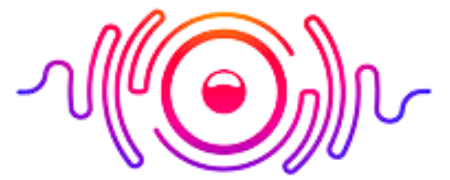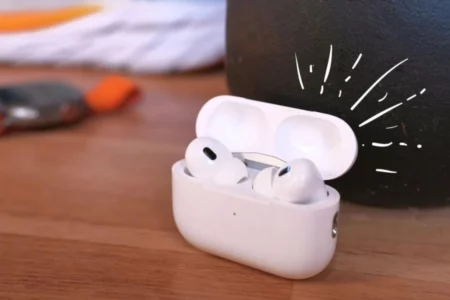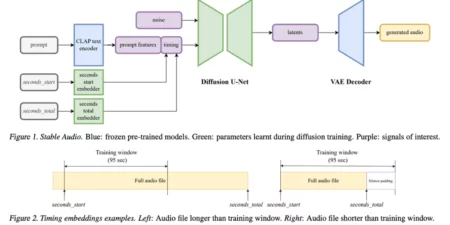If you want to improve your audio setup, you may wonder if you need an amp or DAC. It gives rise to DAC vs AMP debate among enthusiasts. To understand the role of both and find the difference, we first must look for each option briefly.
An amplifier or Amp strengthens the signal from your audio source to your listening device by providing more power. A DAC (digital-to-analog converter) processes the digital signals and translates them into audio signals. It is essential for audio because it requires converting sound from digital to analog signals to be amplified and heard through headphones or speakers.
AMP and DAC work together to improve the sound quality and listening experience. In this article, we’ll take a closer look at the difference between DAC and Amp and recommend whether you should buy a DAC or AMP separately or buy the best dacamp.

What is an AMP?
An electronic amplifier is a device used to amplify or improve the strength of a time-varying signal. It does this by drawing power from a supply and using it to produce a boosted and strong signal for the output. The amplification or enhancement ability of an amplifier is known as its gain. It measures the output voltage, power, or current relative to the input signal.
What is DAC Amplifier?
A DAC amplifier can transform digital signals or information from a computer or other device into an analog signal. This signal then passes to an amplifier, which increases the signal’s power before it goes to your headphones. Most people wonder what is a DAC used for. DAC chips are in many audio source devices, such as laptops, portable music players, and smartphones. However, the analog headphone jack is slowly becoming a less popular feature.
How to Connect DAC to Amp?

Digital-to-analog converters (DACs) improve the quality of an analog audio signal by converting it to a digital signal. USB DACs have used with laptop or desktop computers, and they can provide a more balanced sound stage for professional audio mastering and recording.
- Step 1: Plug into the USB port to connect the DAC speaker to your computer. Once the computer has botts and you’ve logged in as administrator, you’ll be all set!
- Step 2: To connect the DAC with headphones or an external Amp, insert the RCA or stereo cables into the rear of the DAC. Then, connect the other end of the cables to the amplifier rear for the audio input. Next, connect external speakers or headphones to the amplifier using a stereo cable. Turn the amplifier on after connecting them.
- Step 3: Find the installation CD for the DAC drivers and put it into the computer CD-ROM. Complete the installation by following the on-screen instructions. Some DAC requires driver installation, while many DAC don’t need them as they can work right out of the box.
- Step 4: The last step is to test the DAC by running an audio file. Let the file play in a music-playing application and listen to whether it has an audible sound. If you don’t hear any sound, you can troubleshoot it by going to the “Tools” inside the audio application. Navigate to “Preferences” and select the audio output device from the list you want to connect as DAC.
Do I Need DAC?
DACs (digital to analog converters) can sometimes improve the sound quality of your headphones, speakers, or IEMs (in-ear monitors). DACs take a digital signal (like information from a computer or phone) and convert it into an analog signal that these devices can use.
All computers or phones come with a DAC (digital-to-analog converter) and an amp (amplifier) built into them, so you don’t need to buy an external DAC for your headphones. However, using an external DAC can enhance sound quality. A standalone DAC cannot connect directly to your audio device and must first connect to an amplifier before using it.
Buying an external DAC will provide a clearer and more accurate sound than using the internal DAC of your current electronic device. It is because external DACs are made with the sole focus of achieving clarity and accuracy, whereas internal DACs are not.
DACs can improve the sound quality of your device by making it more accurate to the manufacturer’s intended sound. Your headphones will sound different but better, with more details and a fuller frequency range. Higher-quality audio with higher bitrates will require an external DAC because internal ones can’t handle that much data.
If you want to improve the audio quality of your headphones, you need an external DAC. External DACs have better components than built-in DACs in most devices, providing more clarity and accuracy. It is imperative if you listen to high-fidelity audio with high bitrates.
If you’re looking to improve the audio quality of your listening experience, a DAC (digital-to-analog converter) is worth the investment. DACs can provide more clarity and a fuller sound than your onboard audio solution, especially if you have high-fidelity headphones. So, if you want to get the most out of your music, a DAC is a great way to do it.
Do You Need A DAC With an Amp?
An amplifier, or amp for short, increases the power of a low-power signal from a DAC so that your sound device can use it. The amount of power an amp can deliver varies depending on the quality of the amp.
If you must use most of the volume on your headphones to hear your audio correctly, this indicates that you could benefit from an amplifier. More premium audio devices that require a lot of power will often need an amp to see any benefit, but cheaper audio devices like earbuds usually won’t see any difference.
The extra power the amplifier gives the headphones can help them reach their full potential, making them sound better. With increased power, you may begin to hear different parts of the music more clearly than you couldn’t before – this is because your device’s drivers now have enough power to deliver all the bass or treble, they’re capable of.
The whole point of an amp is to make your headphones sound better by providing more power. It could change the sound signature of your headphones, making them sound different than they initially did. For example, you might hear better bass, treble, mids, and other details.
In most cases, a DAC stereo amplifier will improve the sound quality of your headphones, speakers, or IEMs. Unless you’re using a cheap pair of earbuds, an amplifier will bring your audio devices closer to the sound that the manufacturer intended. Amps don’t have their signature sound, but they provide more power to your existing audio devices.
DAC Or Amp: More Important?
If you’re looking for ways to improve your audio equipment’s sound quality and power, one option is to get an amp/DAC. It can be especially beneficial if you have low-quality headphones or speakers. For most cases, an amp is a preference that you can get.
If you want to improve your sound quality or use high-quality headphones, you’ll need an amp or DAC (or both) to get the most out of them. Many sound cards have onboard amps, but they’re usually not very good. An external amp or DAC will give you much better sound quality.
Should You Get DAC or Amp for Gaming?
One main reason to get a DAC instead of an amp first is if you want a gaming DAC since it has an already included one. It would be beneficial if you have a gaming headset, but it lacks 7.1 surround sound support. The DAC/Amp combo will improve the sound quality by making it more precise, adding depth and dimension, and enhancing microphone quality. It’s a worthwhile investment for any gamer looking to improve their audio-visual experience.
Gaming DACs improve your sound quality and provide more power than your motherboard audio. These devices have top-of-the-line virtual surround sound systems that are much better than the virtual 7.1 surround sound built into gaming headsets. It will make you feel more immersed in the game and help you perform better.
Should you Get DAC or Amp for Headphones?
You’ll want a regular amplifier if you’re not primarily gaming. Amps are an excellent foundation for building up your audio setup. As mentioned before, you’ll need an amp before getting a DAC. Plus, it’s the easiest way to provide extra power to your headphones which also adds to the quality.
Often, you’ll find that you need to purchase a dacamp combo because you’ve bought new headphones that will perform better with these devices. In most cases, an amp is required for premium headphones and should be your priority. For the most part, DAC is not the priority when selecting between both devices. Therefore, prioritize getting an amp first if you get caught between the two.
As you can see, there are significant differences between an amplifier and a DAC. An amplifier takes the low-power signal from the DAC and amplifies it so your audio device can use it. The DAC regulates the quality of the sound. Most devices like phones and computers come with a built-in amp and DAC.
Amp and DAC explained above show that if you have premium headphones or would like to improve the audio quality of your headphones, you will need an external amplifier. Amps increase the loudness of your headphones and the strength of the bass and treble.
External amps are needed if you have premium headphones or would like to get more out of them, so they are louder, have stronger bass and treble, and, ultimately, have better sound. A DAC’s primary function is to control the audio quality by processing the digital information of very high quality or bitrates and converting it into an analog signal that can be understood and appreciated by our auditory system.
Power is everything to premium headphones – you’ll need an amp to use them to their fullest potential. If you want the best sound quality possible, you’ll need to upgrade your onboard audio solution with a DAC (digital-to-analog converter). It will significantly improve the sound quality coming from your headphones or speakers.
Conclusion





